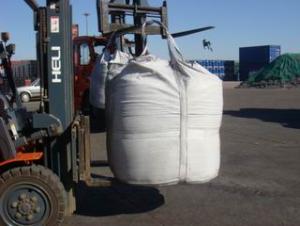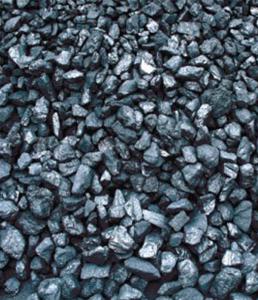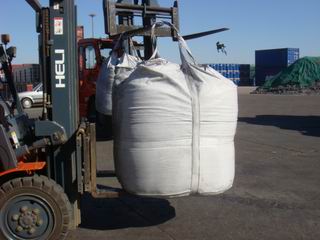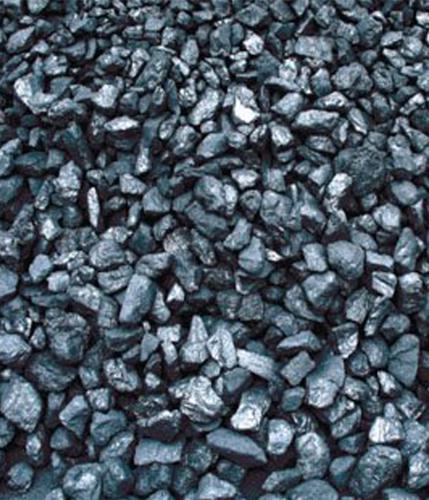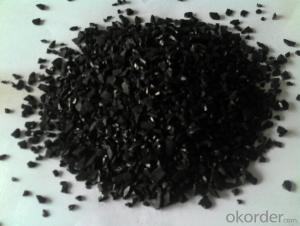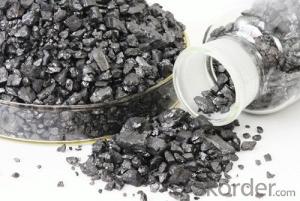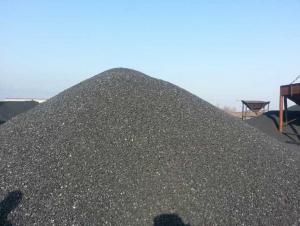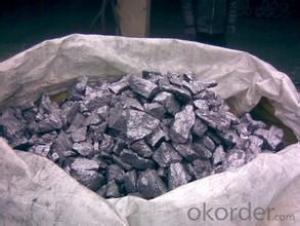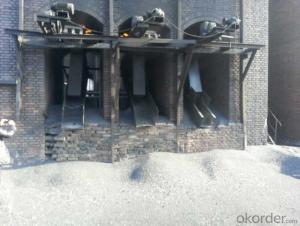Calcined Anthracite Coal FC 92 Reasonable Price
- Loading Port:
- China main port
- Payment Terms:
- TT OR LC
- Min Order Qty:
- 0 m.t.
- Supply Capability:
- 20000 m.t./month
OKorder Service Pledge
Quality Product, Order Online Tracking, Timely Delivery
OKorder Financial Service
Credit Rating, Credit Services, Credit Purchasing
You Might Also Like
Product Description
Calcined Anthracite coal is produced using the best Anthracite-Taixi Anthracite with low S and P, It is widely used in steel making and casting.
Features
Calcined Anthracite Coal
Fixed carbon: 90%-95%
S: 0.5% max
Size: 0-3. 3-5.3-15 or as request
Specification
PARAMETER UNIT GUARANTEE VALUE | |||||
F.C.% | 95MIN | 94MIN | 93MIN | 92MIN | 90MIN |
ASH % | 4MAX | 5MAX | 6MAX | 7MAX | 8MAX |
V.M.% | 1 MAX | 1MAX | 1.5MAX | 1.5MAX | 1.5MAX |
SULFUR % | 0.5MAX | 0.5MAX | 0.5MAX | 0.5MAX | 0.5MAX |
MOISTURE % | 0.5MAX | 0.5MAX | 0.5MAX | 0.5MAX | 0.5MAX |
Size can be adjusted based on buyer's request
Pictures
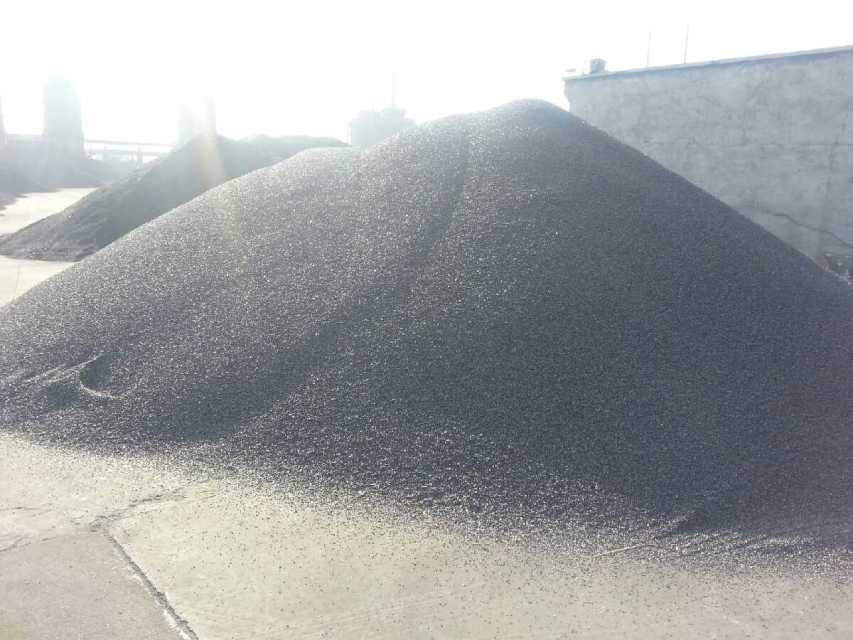
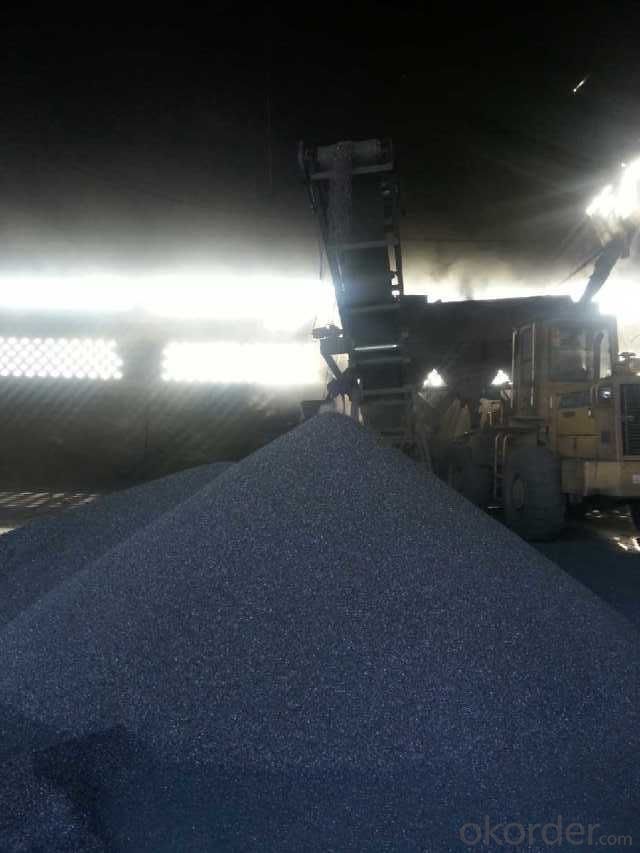

- Q: How does carbon dioxide affect global warming?
- Global warming is caused by carbon dioxide, one of the main greenhouse gases. When carbon dioxide is released into the atmosphere, it traps heat from the sun and prevents it from escaping into space. This leads to a rise in the Earth's overall temperature, a phenomenon known as the greenhouse effect. The Earth's atmosphere acts like the walls of a greenhouse, trapping heat and warming the planet. Human activities, such as burning fossil fuels, deforestation, and industrial processes, have significantly increased the amount of carbon dioxide in the atmosphere. These activities have released large amounts of carbon dioxide that would have otherwise remained underground for millions of years. As a result, the concentration of carbon dioxide in the atmosphere has reached levels not seen in hundreds of thousands of years. The increase in carbon dioxide levels intensifies the greenhouse effect and worsens global warming. Rising temperatures have negative effects on the Earth's climate system, including the melting of polar ice caps and glaciers, which leads to rising sea levels. This poses a threat to coastal communities and low-lying areas, increasing the risk of flooding and erosion. Additionally, global warming disrupts weather patterns, resulting in more frequent and severe extreme weather events like hurricanes, droughts, and heatwaves. Moreover, global warming impacts ecosystems and biodiversity. Many species are unable to adapt to rapid temperature changes, resulting in habitat loss and an increased risk of extinction. Coral reefs, for instance, are highly sensitive to temperature changes and are experiencing widespread bleaching events due to warmer ocean temperatures. Efforts are being made to reduce greenhouse gas emissions and mitigate the effects of carbon dioxide on global warming. Measures such as transitioning to renewable energy sources, improving energy efficiency, reforesting, and implementing sustainable practices are being taken to curb carbon dioxide emissions and lessen the impacts of global warming.
- Q: What is the carbon content of different types of rocks?
- The carbon content of different rock types can vary greatly, with rocks primarily consisting of minerals that do not contain much carbon. However, certain rocks can have varying amounts of carbon due to the presence of organic matter or other carbon-rich materials. Sedimentary rocks, like limestone and coal, have the potential to contain higher levels of carbon. Limestone is mainly made up of calcium carbonate, but it can also have small amounts of organic matter or carbonates that contribute to its carbon content. In contrast, coal is a sedimentary rock formed from decomposed and carbonized plant material, resulting in a high carbon content ranging from 50% to 90%. Igneous rocks, formed from solidified molten material, generally have very low carbon content because the process of magma crystallization does not involve the inclusion of carbon-rich materials. However, there are exceptions in certain cases where magma interacts with carbon-rich fluids or rocks, leading to the formation of carbon-bearing minerals like graphite or diamond. Metamorphic rocks, formed through the transformation of existing rocks under high pressure and temperature, may contain varying amounts of carbon. The carbon in metamorphic rocks can come from the original rock or be introduced during the metamorphism process. For example, carbonaceous material in shale or limestone can be converted into graphite or other carbon-rich minerals during metamorphism. It is important to note that although some rocks may have significant carbon content, they are not considered a major reservoir of carbon in the Earth's carbon cycle. The majority of carbon is stored in the atmosphere as carbon dioxide, in the oceans, or in organic matter within living organisms.
- Q: How does carbon contribute to global warming?
- Carbon contributes to global warming through the greenhouse effect. When carbon dioxide (CO2) and other greenhouse gases are released into the atmosphere, they trap heat from the sun and prevent it from escaping back into space. This leads to an increase in the Earth's surface temperature, causing global warming. The primary source of carbon emissions is the burning of fossil fuels such as coal, oil, and natural gas for energy production, transportation, and industrial processes. These activities release large amounts of CO2 into the atmosphere, which accumulates over time and enhances the greenhouse effect. Additionally, deforestation and land-use changes also contribute to rising carbon levels. Trees and plants absorb CO2 as part of photosynthesis, acting as a natural carbon sink. However, when forests are cleared, this stored carbon is released back into the atmosphere. Moreover, the loss of trees reduces the overall capacity to absorb CO2, exacerbating the problem. The consequences of increased carbon emissions are far-reaching. Rising temperatures result in the melting of polar ice caps and glaciers, leading to sea-level rise and threatening coastal communities. Furthermore, carbon-driven global warming disrupts weather patterns, causing extreme weather events such as hurricanes, droughts, and heatwaves. To mitigate the impact of carbon on global warming, efforts must be made to reduce carbon emissions. This can be achieved through transitioning to renewable energy sources like solar and wind, improving energy efficiency, promoting sustainable practices in agriculture and forestry, and implementing policies that encourage carbon capture and storage. Addressing carbon emissions is crucial in combating global warming and its associated consequences. By understanding the role of carbon in the greenhouse effect, we can work towards a sustainable future that minimizes the harmful effects of climate change.
- Q: Why vegetarianism can reduce carbon emissions?
- But the calculations are complicated, but the reason for vegetarianism to reduce carbon emissions is simple;If people eat carnivorous, then this meat must eat vegetarian food can be transformed, but the conversion efficiency is not 100%, so when the animal meat vegetarian, it will waste some energy, but also have a CO2,
- Q: How are carbon nanotubes used in various applications?
- Carbon nanotubes possess remarkable versatility and have discovered countless applications across diverse fields. In the realm of electronics, they serve as an alternative to conventional silicon-based materials, thereby facilitating the creation of smaller, faster, and more efficient devices. They function as the fundamental components for transistors, interconnects, and memory devices. Within the energy sector, researchers are exploring the potential of carbon nanotubes to enhance battery and supercapacitor performance. Their exceptional electrical conductivity and expansive surface area render them ideal for augmenting energy storage and expediting charge and discharge rates. Moreover, carbon nanotubes find utility in the realm of materials science. By incorporating them into composites, it is possible to bolster their strength, rigidity, and electrical conductivity. These composites prove valuable in the aerospace, automotive, and construction industries, where lightweight and durable materials are in high demand. Furthermore, carbon nanotubes are under investigation for their medical applications. Thanks to their distinct properties, they can be utilized in drug delivery systems, sensors, and imaging technologies. They possess the ability to selectively target cancer cells, thereby enabling more efficient and precise treatment alternatives. To summarize, carbon nanotubes offer an extensive array of applications, ranging from electronics and energy storage to materials science and medicine. Their exceptional properties make them highly coveted for enhancing performance and driving advancements across various industries.
- Q: What is carbon offsetting in the travel industry?
- The travel industry utilizes carbon offsetting as a means of compensating for the carbon emissions generated during travel activities. This involves investing in projects that either decrease or eliminate an equivalent quantity of greenhouse gases from the atmosphere. Given that travel significantly contributes to global carbon emissions, carbon offsetting has emerged as a way for individuals and businesses to acknowledge their environmental impact and strive towards more sustainable practices. When individuals or companies choose to offset their travel emissions, they undertake a calculation of their trip's carbon footprint. This calculation takes into account factors such as distance traveled, mode of transport, and fuel consumption to determine the amount of carbon dioxide equivalent emitted during the journey. To counterbalance these emissions, they then allocate investments towards projects that reduce or eliminate the same amount of greenhouse gases from the atmosphere. These projects may include initiatives related to renewable energy, reforestation, or energy efficiency. The underlying idea of carbon offsetting is to achieve carbon neutrality, wherein the emissions produced are offset by an equal reduction or elimination of emissions elsewhere. By investing in offset projects, both travelers and travel companies can effectively mitigate their environmental impact and contribute to broader efforts in combating climate change. Carbon offsetting in the travel industry not only aids in reducing the carbon footprint of individual trips but also fosters the development of sustainable practices within the tourism sector. It grants travelers the opportunity to lessen their environmental impact by supporting projects that promote renewable energy, biodiversity conservation, or the betterment of local communities' livelihoods. However, it is crucial to ensure that carbon offset projects are credible and genuinely result in emission reductions. Verified standards and certifications, such as the Gold Standard or Verified Carbon Standard, play a significant role in guaranteeing the integrity and transparency of offset projects. Furthermore, it is essential to prioritize efforts in directly reducing emissions, such as utilizing more fuel-efficient transportation or opting for low-carbon alternatives, before solely relying on offsetting. In conclusion, carbon offsetting in the travel industry empowers individuals and businesses to take responsibility for their carbon emissions by investing in projects that decrease or eliminate greenhouse gases. It serves as a proactive approach towards minimizing the environmental impact of travel and promoting sustainable practices within the tourism sector.
- Q: How does carbon dioxide affect climate change?
- Carbon dioxide (CO2) affects climate change primarily through the greenhouse effect. When CO2 is released into the atmosphere, it acts as a greenhouse gas, trapping heat from the sun and preventing it from escaping back into space. This phenomenon leads to an increase in global temperatures, known as global warming, and contributes to climate change. The excessive buildup of CO2 in the atmosphere is primarily caused by human activities, such as burning fossil fuels and deforestation, which have intensified the greenhouse effect and accelerated climate change.
- Q: What is carbon nanowire?
- Carbon nanowires are one-dimensional structures made entirely of carbon atoms. They are incredibly thin, with diameters ranging from a few nanometers to a few micrometers, while their length can vary from a few micrometers to several centimeters. These nanowires possess exceptional electrical, thermal, and mechanical properties due to their unique structure and composition. Carbon nanowires can be produced through various methods, such as chemical vapor deposition, electrospinning, or template synthesis. They can have different structures, including single-walled or multi-walled, and can be straight or coiled. The properties of carbon nanowires can be further enhanced by incorporating other elements or functional groups into their structure. One of the most significant advantages of carbon nanowires is their high electrical conductivity, which makes them suitable for various electronic and energy applications. They can be used as interconnects in nanoscale devices, electrodes in energy storage devices like batteries and supercapacitors, and in sensors for detecting various substances due to their exceptional sensitivity. Carbon nanowires also exhibit exceptional mechanical properties, such as high tensile strength and flexibility. These properties make them suitable for applications in nanotechnology, including reinforcement in composite materials, nanoscale actuators, or as templates for fabricating other nanoscale structures. Furthermore, carbon nanowires possess excellent thermal conductivity, which makes them potential candidates for thermal management applications, such as heat sinks or as fillers in thermal interface materials. In summary, carbon nanowires are ultrathin carbon-based structures with remarkable electrical, thermal, and mechanical properties. Their unique characteristics make them promising materials for a wide range of applications in electronics, energy, sensing, nanotechnology, and thermal management.
- Q: How does carbon affect the quality of soil?
- Carbon plays a crucial role in determining the quality of soil. When organic matter, such as dead plants and animals, decomposes, it releases carbon into the soil. This process is known as carbon sequestration, and it is essential for maintaining soil fertility and health. The presence of carbon in soil promotes the growth of beneficial microorganisms, such as bacteria and fungi, which contribute to the breakdown of organic matter and the recycling of nutrients. These microorganisms help to create a rich and fertile soil environment, ensuring that essential nutrients are available for plants to absorb. Additionally, carbon in soil improves its structure and water-holding capacity. It acts as a sponge, allowing the soil to retain moisture, which is crucial for plant growth and survival. Carbon also helps to prevent soil erosion by binding particles together, reducing the risk of nutrient loss and water runoff. Furthermore, carbon enhances the soil's ability to store and release nutrients. It acts as a reservoir, holding onto essential elements like nitrogen, phosphorus, and potassium, and gradually releasing them to plants over time. This nutrient cycling is vital for sustaining healthy plant growth and productivity. Unfortunately, modern agricultural practices, such as excessive tilling, overuse of synthetic fertilizers, and deforestation, have led to a significant decline in soil carbon levels. This loss of carbon has detrimental effects on soil quality, leading to decreased fertility, increased erosion, and reduced water-holding capacity. To mitigate these negative impacts, it is crucial to adopt sustainable agricultural practices that focus on carbon sequestration and soil conservation. These practices include reducing tillage, incorporating cover crops, practicing crop rotation, and applying organic fertilizers. By increasing carbon levels in soil, we can improve its quality, promote plant growth, and ensure the long-term sustainability of our agricultural systems.
- Q: How does carbon impact the global water cycle?
- The global water cycle can be significantly influenced by carbon through various mechanisms. One major way in which carbon affects the water cycle is through the process of photosynthesis. During photosynthesis, plants and trees absorb carbon dioxide from the atmosphere and convert it into oxygen and glucose. This not only contributes to the carbon cycle but also plays a vital role in the water cycle. When plants undergo photosynthesis, they release water vapor into the atmosphere via small pores called stomata. This water vapor contributes to the overall humidity in the atmosphere, leading to increased cloud formation. Clouds, in turn, play a critical part in the water cycle as they contain condensed water droplets that eventually precipitate. Furthermore, carbon dioxide is a greenhouse gas that contributes to global warming and climate change. As the Earth's temperature rises due to increased levels of carbon dioxide, it has an impact on the water cycle as well. Warmer temperatures can result in higher rates of evaporation, leading to more water evaporating from oceans, rivers, and lakes. This excess moisture in the atmosphere can lead to more intense rainfall events, causing floods and other extreme weather phenomena. Moreover, carbon dioxide can affect the acidity of water bodies. When carbon dioxide dissolves in water, it forms carbonic acid, which can lower the pH of the water. This process, known as ocean acidification, can have detrimental effects on marine life, especially organisms that rely on calcium carbonate for their shells and skeletons. These impacts can disrupt ecosystems' balance and have long-term consequences for the health and functioning of the global water cycle. To summarize, carbon exerts a profound influence on the global water cycle through processes like photosynthesis, greenhouse gas emissions, and ocean acidification. Understanding these interactions is vital for managing the environmental effects of carbon and ensuring the sustainability of the water cycle.
Send your message to us
Calcined Anthracite Coal FC 92 Reasonable Price
- Loading Port:
- China main port
- Payment Terms:
- TT OR LC
- Min Order Qty:
- 0 m.t.
- Supply Capability:
- 20000 m.t./month
OKorder Service Pledge
Quality Product, Order Online Tracking, Timely Delivery
OKorder Financial Service
Credit Rating, Credit Services, Credit Purchasing
Similar products
Hot products
Hot Searches

